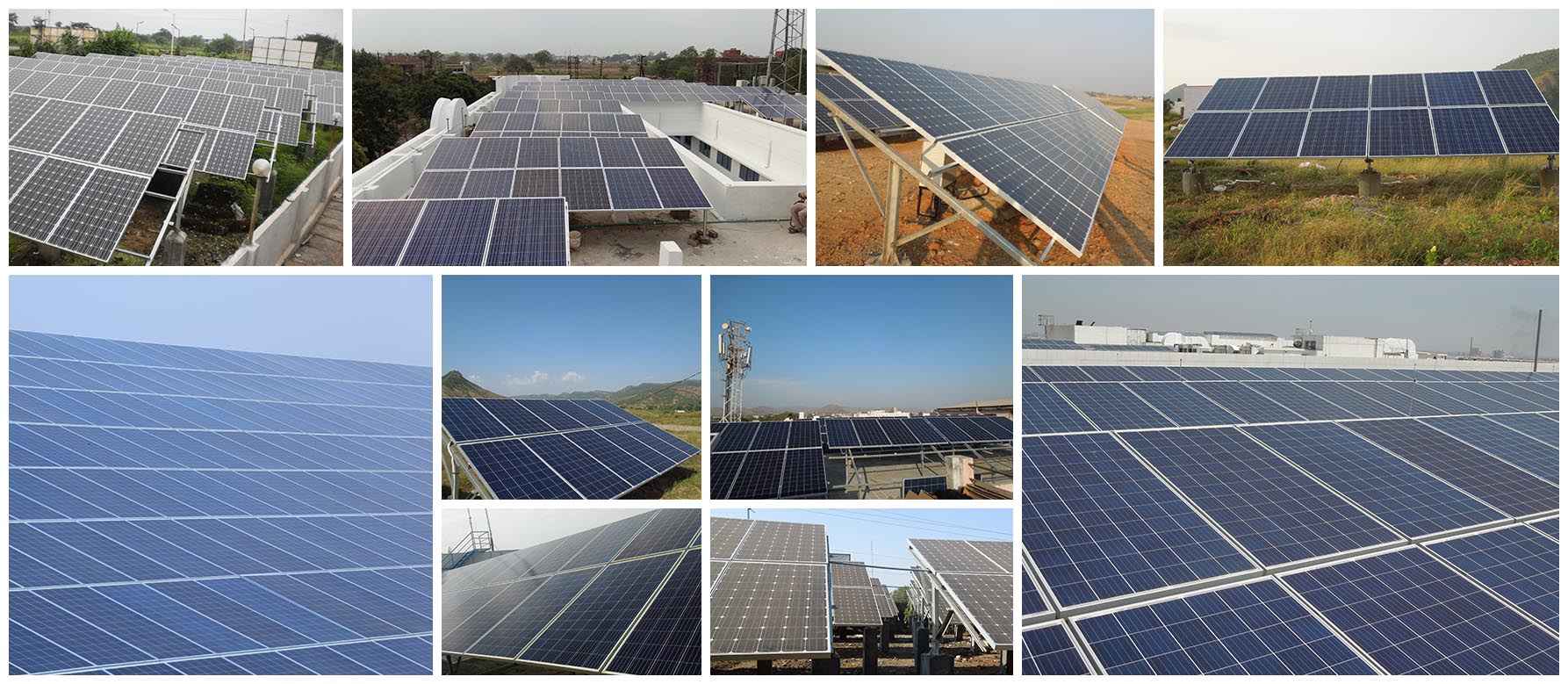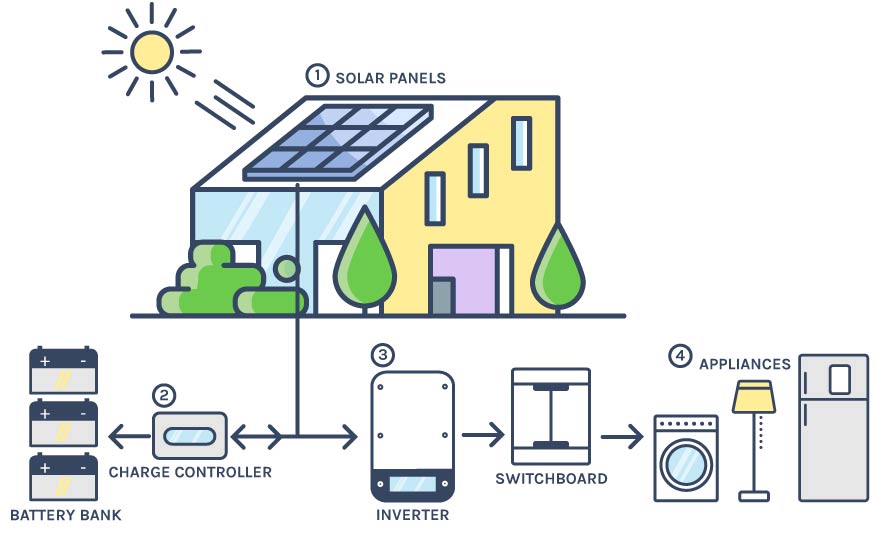Off-Grid Solar System
An off-grid system is not connected to the electricity grid and therefore requires battery storage. An off-grid solar system must be designed appropriately so that it will generate enough power and have enough battery capacity to meet the power requirements, even when there is less sunlight in winter or in the rainy season.




